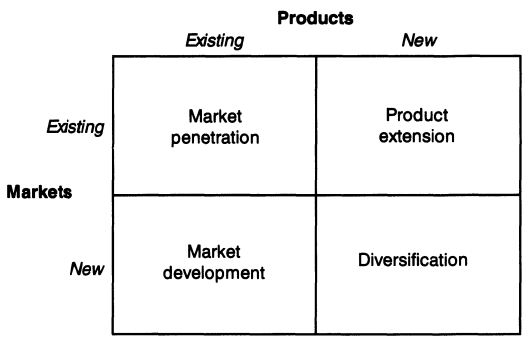Introduction
Ansoff Matrix is the tool to analyse growth opportunities for a business. These are four dimensions of the model such as: market development, market penetration, product development and diversification. This article analyses Ansoff Matrix for Vodafone.
Application of Ansoff Matrix for Vodafone

Market penetration
Market penetration is the process of increasing the business operation in current market and intensifying the market share at existing market through extensive marketing campaigns and efficiency. Contextualising Ansoff Matrix for Vodafone suggests that Vodafone is a multinational telecommunication industry and provides service world-wide. They can use market penetration to increase their sells in the countries they provide service. They have to introduce loyalty scheme to attract more customers and launch special offers to promote their service and products. To achieve the objective of market penetration, Vodafone has to do something customers have rarely experienced before. This may include new generation network such as 5G, or providing a new sub product such as life insurance coverage based on specific internet usages. Such strategies may enable Vodafone achieve their market penetration objective.
Market development
Market development is the strategy of targeting new market or new area of current market. In this process current products and services are sold in new market which has been targeted. Relating Ansoff Matrix for Vodafone implies that Vodafone is a hugely diversified company with thousands of products and services selling all around the world both in self stores and in franchise stores. The company already has business in Africa and Middle East, Americas, Asia-Pacific, Europe and rest of the world through online selling channel (Reuters, 2009). The company is continuously working to expand their business in rest of the world through online selling channels and franchise networks. Also, the company is continuously working to cover large corporations. For instance, it started Vodafone Global Enterprise (VGE) to serve global companies such as DHL, Unilever, The Linde Group etc. (Computer Weekly, 2012). It implies that the company is continuously working to expand the market.
You may also like to read in below blog posts: PESTLE analysis of Vodafone Porter’s Five Forces model of Vodafone Stakeholder analysis for Vodafone Strategic planning for Vodafone
Strategic Planning for Kellog's
Product development
Product development is the way of selling new product in current market. The extensively gigantic range of products and services of Vodafone imply that product development is embedded with the DNA of the company. But they have to find out customer’s demand before developing current products or producing new products. It will help them to fulfil customer’s demand and they will be stronger than their competitors. As a result of such attitude to product development, it has become able to expand the business to IPTV, smart televisions, mobile phones, Internet Television etc. products and services; whilst the core product was mobile networks.
Diversification
It is the process in which companies operate business by selling new products in new market. It is the riskiest strategy because company has no idea about new market and the customer’s demand of new product. Contextualising the Ansoff Matrix for Vodafone suggests that diversification strategy is highly used by the company because it has been bringing new telecommunication products and services irrelevant to its core business. For example, bringing Digital TV, Routers etc. are not the core products of Vodafone. Also the example of providing services to companies such as DHL or Unilever shows their diversification attitude. It can bring high loss also because the company will be new in the market and does not know the demand of their new product. They have to gather important information about the market and demand of customers. It will help them to produce of develop current product according to the demand of new market. Such approach will ensure the success in new market and will bring high profit to Vodafone.

Pingback: PESTLE analysis of Vodafone - George Business Review
Pingback: Stakeholder analysis for Vodafone - George Business Review
Pingback: Porter’s Five Forces model of Vodafone - George Business Review
Pingback: Strategic planning for Vodafone - George Business Review
Pingback: Marketing strategies of Uber - George Business Review
Pingback: Strategic Planning for Kellogg's - George Business Review
Pingback: Marketing strategies of IKEA in the Chinese Market - George Business Review
Pingback: Marketing strategies of Samsung - George Business Review